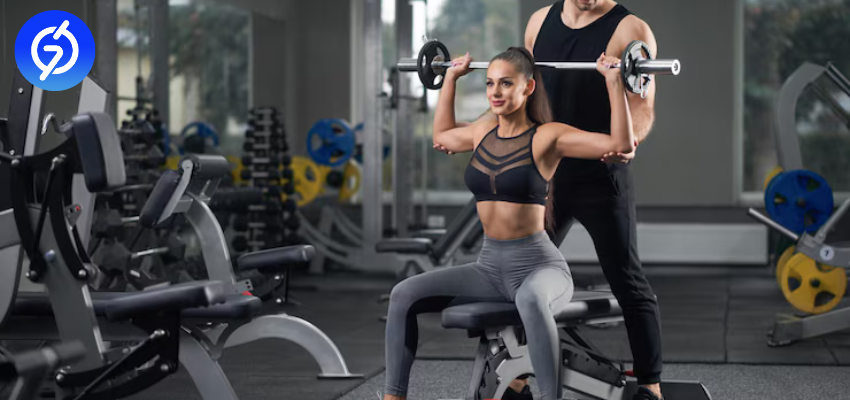Key Metrics to Measure the True Success of Your Gym Ad Campaigns

In today’s competitive fitness market, running a gym ad is not just about creativity—it’s about results. Whether you're advertising on social media, Google, or through local billboards, it’s crucial to understand how well your gym advertising efforts are performing. But how do you measure success? What metrics matter? How can you turn clicks into memberships?
In this guide, we’ll break down the real-world metrics you need to track to measure the effectiveness of your gym advertisement campaigns. Whether you're running an ad for a small local gym or a national fitness chain, these strategies will help you make data-driven decisions that drive real growth.

Why Tracking Gym Ad Performance Matters
Advertising without tracking is like lifting weights without counting reps—you might be working hard, but you’ll never know if you’re improving. Measuring ad success ensures that:
You know what’s working (and what’s not).
Your marketing budget is spent wisely.
You can scale successful campaigns.
You get real returns on your advertising investment.
This is especially important in the fitness industry, where customer acquisition costs can be high, and the market is saturated with competitors.
Key Metrics to Measure Your Gym Ad Success
Let’s dive into the real metrics that tell you how effective your gym advertising truly is.
Click-Through Rate (CTR)
What it is: The percentage of people who saw your gym ad and clicked on it.
Why it matters: A high CTR indicates that your ad is relevant and appealing to your target audience.
How to improve it:
Use attention-grabbing headlines.
Include strong calls to action (CTAs) like “Join Now” or “Free 7-Day Pass.”
Feature real gym imagery and testimonials.
Conversion Rate
What it is: The percentage of users who take a desired action after clicking your ad, like signing up for a trial or contacting you.
Why it matters: Clicks are great, but conversions bring in revenue. A gym ad that gets 100 clicks but only 1 membership sign-up isn’t effective.
How to improve it:
Ensure your landing page matches the ad offer.
Minimize form fields to reduce friction.
Offer time-sensitive promotions to boost urgency.
Cost Per Acquisition (CPA)
What it is: The average cost to acquire one new member through advertising.
Why it matters: It helps you assess whether your gym advertisement efforts are financially sustainable.
How to improve it:
Target high-intent keywords and demographics.
Test ad copy and creative to find the most efficient performers.
Retarget users who didn’t convert on the first visit.
Return on Ad Spend (ROAS)
What it is: The revenue generated for every dollar spent on ads.
Formula:
ROAS = (Revenue from Ads) ÷ (Cost of Ads)
Why it matters: It’s the ultimate metric for evaluating the profitability of your ad campaigns.
How to improve it:
Use lifetime value (LTV) calculations to assess long-term value.
Upsell or cross-sell memberships, classes, or personal training sessions.
Impression Share
What it is: The percentage of times your ad is shown versus how often it could have been shown (especially on Google Ads).
Why it matters: It tells you if you’re missing out on visibility due to budget or bid constraints.
How to improve it:
Increase your daily ad spend.
Improve your ad quality score.
Narrow your target audience for higher relevance.
Lead Quality
What it is: The likelihood that a lead will become a paying customer.
Why it matters: Many low-quality leads waste your sales team’s time and drain your budget.
How to improve it:
Use detailed targeting based on income, fitness goals, and location.
Include qualifying questions in your contact forms (e.g., “Are you ready to join a gym this month?”).
Use CRM tools to score leads automatically.
Customer Retention and Churn Rate
What it is: How long your new members stick around after joining.
Why it matters: If new customers leave after a month, your advertising efforts may be attracting the wrong audience.
How to improve it:
Offer onboarding programs or fitness consultations.
Follow up with new members through email or app engagement.
Promote loyalty programs to keep users coming back.
Tools to Track Your Gym Ad Metrics
Tracking metrics doesn’t have to be complicated. Here are a few tools that can make the process easier:
Google Analytics: Track conversions, user behavior, and traffic sources.
Meta Ads Manager (Facebook/Instagram): View CTR, conversions, and ROAS.
Google Ads: Monitor impression share, CPA, and keyword performance.
CRM Software (e.g., HubSpot, Gymdesk, Zen Planner): Track leads, follow-ups, and customer retention.
Call Tracking Tools: Use services like CallRail to track how many phone calls your ads generate.
7Search PPC:
7Search PPC is a digital advertising network offering cost-effective pay-per-click solutions for businesses, nonprofits, and adult content promotion.
Grow Your Sales with Targeted Advertising – Get Started Now!
Gym Ad Campaign Examples and What to Measure
Let’s look at a few examples of gym advertising campaigns and the metrics you’d want to measure for each.

A. Social Media Campaign: “Free 7-Day Trial”
Primary metric: Conversion rate (from click to sign-up).
Secondary metrics: CTR, CPA, lead quality.
Tip: Use video testimonials to increase trust and conversions.
B. Google Search Ads: “Best Gym Near Me”
Primary metric: ROAS.
Secondary metrics: Impression share, CTR, CPA.
Tip: Focus on geo-targeting and mobile optimization.
C. Retargeting Ads: “Come Back and Get 1 Month Free”
Primary metric: Conversion rate.
Secondary metrics: CPA, churn reduction.
Tip: Use urgency and personalization to bring prospects back.
Tips to Maximize Your Gym Advertising ROI
To ensure your gym ads are as effective as possible, keep these best practices in mind:
Test Often: A/B test headlines, images, offers, and CTAs regularly.
Target Smart: Focus on high-intent users based on behavior and location.
Optimize Landing Pages: Every click should lead to a clear, frictionless path to conversion.
Use Video: People love seeing real gym transformations, classes, or trainer intros.
Track the Right Data: Don’t just focus on vanity metrics like likes—track what drives sign-ups and revenue.
Conclusion
Running a gym ad without tracking its performance is like working out without goals—you’ll never know if you’re progressing. By focusing on the right metrics—CTR, conversions, CPA, ROAS, and more—you can refine your gym advertising strategy, reduce wasted spend, and attract high-quality members.
Effective gym advertisement isn’t just about looking good; it’s about delivering measurable results. With the right tools and a consistent optimization strategy, you’ll turn your ads and gym campaigns into real growth engines for your business.
Frequently Asked Questions (FAQs)
How long should I run a gym ad before measuring results?
Ans. You should start tracking results immediately, but allow 7–14 days for enough data to determine performance trends, especially if you're testing a new audience or offer.
What’s a good average conversion rate for gym ads?
Ans. A solid conversion rate for gym ads typically falls between 5%–15%, but this can vary based on the offer and audience.
How much should I spend on gym advertising?
Ans. Many gyms allocate 5–10% of their revenue to advertising. Start small, track your CPA, and scale once you have a profitable campaign.
Which platform is best for gym ads: Google or Facebook?
Ans. It depends. Use Google Ads for high-intent users searching “gyms near me” and Facebook/Instagram for engaging visuals, retargeting, and brand awareness.
Can I run gym ads on a low budget?
Ans. Yes! Even a small budget ($100–$300/month) can yield results if well-targeted. Focus on local reach, compelling offers, and clear CTAs.


